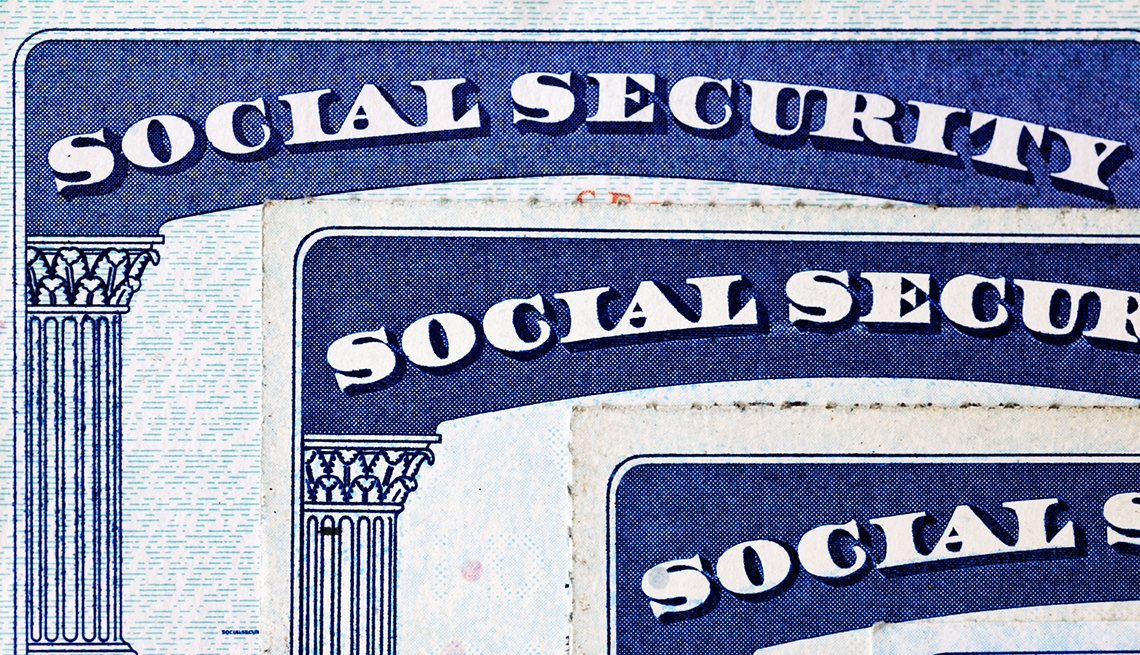
A lot of people depend on Social Security as a means of income when they retire. The Social Security office says that about 50 million retired workers got Social Security benefits in 2020. However, a new study from the 2022 Social Security Trustees says that retirees will get less money in 2034 if Congress doesn't fix the program's funding problems.
That is, Social Security will still be around after 2034, but retirees will only get 77% of their total income from then on. Since the early 1980s, no new Social Security laws have been passed at all. So, this event is coming up that needs Congress to act quickly. If they don't, most people's benefits will be cut by almost 25%. Now, we will be discussing when will social security run out.
Why People Think Social Security Will Go Bankrupt
So why does this false idea about Social Security keep going around? One reason could be that when the news talks about Social Security, they use the name of the program as a shorthand for its funds.
In 2021, the Social Security Board of Trustees released its yearly report on the long-term finances of the Social Security trust funds. We can read it here. "Combined Trust Funds Projected to Run Out One Year Earlier Than Last Year" was the title.
In particular, the study said that the Old Age and Survivors Insurance (OASI) Trust Fund would run out in 2033, which was one year earlier than thought the previous year. The OASI Trust Fund helps pay benefits to current retirees and other eligible Americans.
To begin their tweet about the story, the New York Times said, "Social Security will run out in 2033." In 2033, the OASI Trust Fund will run out of money, not Social Security. And even if that happened, seniors would still get about 76% of their benefits.
That's because both the trust and the wage taxes of people who already work pay for your monthly check. That is, Social Security will keep giving out payments as long as Americans are working and paying taxes, even if the amounts are a little less than they are now.
Why Is Social Security Important?
Many retirees depend on Social Security, and it's one of the few social programs that people from all political parties support. A 2020 AARP poll found that 90% of Democrats, Republicans, and independents agreed with the scheme.
Social Security is meant to help people save for retirement, but many retirees end up depending on the benefits as their primary source of income in retirement. As per the Center on Budget and Policy Priorities, half of all seniors get at least half of their retirement income from Social Security.
As the National Institute on Retirement Security (NIRS) puts it, retirement income is like a "three-legged stool": Social Security, a pension plan, and personal savings for retirement through accounts like a 401(k) or an IRA.
Munnell says that Social Security is one of the most essential parts of the "three-legged stool" of retirement income because only half of private sector workers have a 401(k) at any given time.
401(k) plans have worked well for, say, the top 40% of workers, but they have yet to do much to help the bottom 60%. It's important to remember that a lot of people in this country depend on Social Security and don't have any other income.
Who Will Be Affected Most?
15.4 million Americans aged 65 and up don't live in poverty because of Social Security. The cut would hit people just above the poverty line, and people who are already poor would have the hardest payments to make to balance out spending and income in the year that Social Security runs out.
They think that if payments were cut in this way, the poverty rate for people 60 and older who get Social Security would rise from 4.5% in 2034 to 7.4% in 2035. The information here comes from 2021, and a later guesstimate of when Social Security would run out was made. Of course, the cuts would affect everyone who gets benefits in the future. However, younger workers with higher incomes might have to pay more in taxes as a deal.
The Problem With Social Security
The American population is getting older because people are living longer and having fewer children. Baby Boomers are a large group of people born between 1946 and 1964. They are retiring at a record rate, which means that fewer people are working.
From what the U.S. Census says, 17% of the people living in the country in 2020 will be 65 or older. By 2060, that share should have grown to 24%. At the same time, the share of people who are working age will drop from about 62% in 2020 to 57% in 2060.
Because of this, there will be fewer workers in the future to take care of each retiree. It is expected that the number of workers paying into Social Security will go down from 2.8 in 2021 to 2.3 by 2035.
The Social Security and Medicare Boards of Trustees said in their 2023 report that Social Security's trust fund for retirement payments will run out of money in 2033, which is one year earlier than they thought in 2022. At that point, 77% of the planned rewards will be paid for by tax money.
The Old Age and Survivors Insurance Trust Fund, which gives out retirement and death payments, isn't the only part of Social Security that is expected to run out of money.
The 2023 report from the trustees also said that the Hospital Insurance (HI) Trust Fund, which pays for Medicare Part A, would run out of money in 2031, which is three years later than what was expected in 2022. After that point, 89% of planned benefits will be paid for by payroll taxes.
Possible Solutions For Social Security
Luckily, a significant cut in benefits for everyone is only the worst thing that could happen. Congress has more than ten years to fix Social Security's finances, and politicians are still coming up with ideas for how to do it.
The Social Security Administration often puts out predictions of how these kinds of plans will affect the Social Security trust funds. Congress can make up the difference in Social Security funds in a number of ways. Some of these are:
- Increasing taxes on wages.
- Taking away perks.
- Setting a later age for retirement.
- All of these choices are put together.
As the number of retirees grows, they will likely become an even more potent political force since they have an apparent financial reason to protect Social Security benefits and make sure the system will continue to work.
In the early years of Social Security, Congress didn't want to raise payroll taxes, but they have since passed many increases to keep the program going. There are few examples of plans to means-test benefits or get rid of the yearly limit on income that Social Security taxes, but these ideas may have more support from the public.
The long-term shortfall in funding for Social Security is expected to be 3% of the gross domestic product (GDP). This deficit can be handled, but the program's trustees say in their report that Congress needs to move quickly to make a plan that will work and reassure taxpayers. All of the people who count on the fix are likely to feel worse when it takes longer to work.
The 3 Biggest Myths About Social Security
No, that doesn't mean Social Security will end. It just means that the government will run out of cash and can only pay out what it takes each year in Social Security taxes. There would be enough money in Social Security to pay about 80% of the payments that retired and disabled workers are owed.
There are three places where the money for the trust funds comes from. One is for "Old-Age and Survivors Insurance," which is the official name for the benefits paid to retirees and their families. The other is for disability benefits. In 2022, they fell apart like this:
Most American workers pay a 12.4% tax on their wages, which the government gets through FICA payroll taxes (and employer matches) or SECA taxes that self-employed people pay on their tax returns. This is how 90.6% of Social Security money comes in.
4% came from federal income taxes that some people who get Social Security pay on their payments. 5.4 percent came from interest on the unique U.S. Treasury notes that the trust fund holds.
At the end of 2022, the trust funds had $2.83 trillion in reserves. However, due to changes in population and actuarial trends, benefit payouts are going out faster than income. While the boomers are adding to the number of retirees and living longer, which means they can earn benefits for longer, younger generations are having fewer children, which means they are not paying into Social Security as much.
In the end, this means that the system will use up all of its backup assets by 2034, if not earlier. Lawmakers and policy experts have been debating ways to fix Social Security's finances for years. Most of the ideas fall into two main groups: changing tax laws to bring more money into the trust funds or changing the payout formula to lower costs (or a mix of the two).
Social Security’s Finances, With Payable Benefits
Like the CBO's baseline budget projections, the estimates we've talked about so far are based on the idea that Social Security will keep paying benefits as planned under the Social Security Act, no matter how much money is in the trust funds.
To show what might happen to benefits if the trust funds run out, the CBO also models Social Security benefits based on the idea that they would be restricted to the amounts that can be paid out from specific funding sources.
The Social Security Administration will not be able to pay full benefits when they are due when the trust funds' balance drops to zero. However, beneficiaries will still be legally eligible for full benefits. In the years after the trust funds ran out, yearly spending would be limited to annual income, and beneficiaries would get less money each year.
The way that payments can be lowered is different from the present law. In CBO's models, this means that scheduled benefits will equal payable benefits until the combined trust funds run out in fiscal year 2033. After that, payable benefits will equal the program's annual earnings.
Revenues from Social Security are expected to cover 75% of the program's planned costs in 2034, leaving a 25% gap. The CBO thinks that under the payable-benefits situation, Social Security benefits would be cut by 25% in 2034. By 2097, the difference between planned benefits and benefits that were paid would be 30%, and it would stay that way after that.
What Are The Chances That The Social Security Fund Will Run Out?
Based on how things are going now, it looks like the Social Security trust fund might run out of money around 2033. It might not happen, though. Goss and Glenn say that lawmakers could make a number of changes that would strengthen the trust fund and ensure its financial health for 75 years.
Democrats, Republicans, and bipartisan groups have all come up with different ideas to deal with the trust fund's impending problems. For example, Republicans want to raise the retirement age to 70, which would mean cutting workers' benefits by two to three years. This is an idea that most Americans don't like; three-quarters of those surveyed by AP-NORC said they were against it.
Frequently Asked Questions
Will Social Security Still Be Around In 40 Years?
The future of Social Security in 40 years is uncertain, and potential reforms may be necessary.
Will US Social Security Run Out?
The current projections suggest that the Social Security Trust Fund may be depleted by 2034.
Will Social Security Be Around In 2049?
The existence of Social Security in 2049 depends on future legislative actions and reforms.
Will Gen Z Get Social Security?
As of now, it's uncertain how Social Security will impact Gen Z, and reforms may be in place by the time they reach retirement age.
Conclusion
The future of Social Security raises concerns as projections indicate potential challenges in the coming decades. The 2022 Social Security Trustees report suggests that without congressional intervention, retirees may face a 23% cut in benefits by 2034. While the popular misconception of Social Security going bankrupt persists, it is crucial to recognize that adjustments can be made to address the program's funding issues.
This phrase, “When will social security run out?" reflects the urgency for Congress to act promptly and consider viable solutions such as increasing taxes on wages, adjusting retirement age, or means-testing benefits. Social Security remains a vital pillar of retirement income for millions, emphasizing the need for bipartisan efforts to secure its financial stability and ensure the well-being of future generations.




